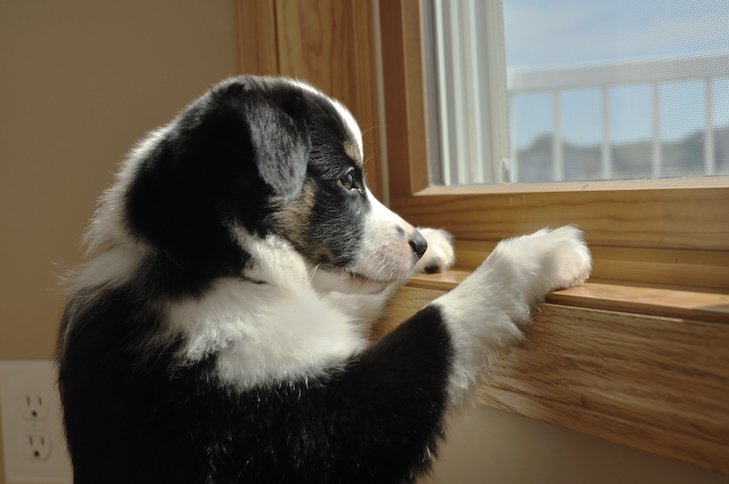If your dog darts through doors the moment they open, you’re not alone. Many pet owners find themselves wrestling with this common behavior — whether it’s their dog bolting out the front door, leaping from the car in a parking lot, or charging through every doorway in the house. While it may seem harmless at first, this kind of behavior can quickly turn dangerous. Teaching your dog to “wait” at doorways isn’t just about obedience — it’s about safety, control, and building mutual respect.
In this guide, we’ll break down a step-by-step method to train your dog to pause patiently at doorways until you give them the go-ahead. You’ll not only protect your dog from potential hazards but also enjoy a more peaceful, respectful home environment.
Why Teach ‘Wait’ at Doorways?
Every doorway poses a potential risk for an untrained dog. Imagine your pup slipping through the front door and running into the street, or leaping out of a car before you’ve had a chance to secure their leash. Even within the house, your dog’s lack of patience at thresholds can be frustrating — bumping into you while you carry groceries or a load of laundry, or bursting out of their crate without warning.
Teaching your dog to wait gives you control over these moments. It offers:
- Safety: Prevent accidents, escapes, and injuries.
- Convenience: Manage daily routines without your dog underfoot.
- Politeness: Encourage calm, respectful behavior around thresholds.
- Impulse control: Help your dog learn emotional regulation and discipline.

Wait vs. Stay: What’s the Difference?
You might wonder — why not just use “stay”? The difference is subtle but significant. When you ask your dog to stay, you expect them to remain in a specific position — sitting, lying down, or standing — until released. That’s great for long-duration stillness, like during grooming or when guests arrive.
“Wait,” on the other hand, is more casual. It doesn’t require your dog to hold a particular posture, just to hold off from moving forward. Your dog can sit, stand, or shift positions, as long as they don’t pass the doorway without permission. It’s a flexible, practical cue for everyday use.
How to Teach Your Dog to Wait at Doors
To start training the “wait” command, use a door inside your home. Choose a calm moment when your dog is settled and not overly distracted.
Step-by-Step Training:
- Open the Door Slightly
With your dog nearby, open the door just a crack. If your dog moves toward it, gently close it. Repeat this process until they stop moving forward. - Reward the Pause
When your dog naturally hesitates, looks away, or backs off, mark that behavior with a clicker or a verbal marker like “Yes,” then reward them with a treat. You’re teaching them that pausing is what gets rewarded. - Gradually Increase Door Opening
Slowly open the door wider in small increments. If your dog stays back, mark and reward. If they move forward, close the door and try again. Go at your dog’s pace. - Add the ‘Wait’ Cue
Once your dog is consistently pausing as the door opens, add a verbal cue like “Wait” or “Hold on,” just before you begin to open it. You can also add a visual cue, like an open palm in front of their face. - Introduce Your Own Movement
Start stepping through the doorway yourself — one step at a time. If your dog remains behind, return and reward them. Over time, increase the number of steps until you can walk fully through the door while your dog holds position. - Use a Release Word
Now introduce a release word such as “Okay” or “Free.” On some occasions, let your dog pass through after hearing the word. On others, reward them for continuing to wait even after the door opens. Varying the outcome reinforces the idea that the door is not theirs to decide — it’s up to you.

Expanding the Training
Once your dog masters the “wait” cue at one doorway, it’s time to generalize the behavior:
- Try other interior doors like bedrooms or bathrooms.
- Move to the crate door to prevent bursting out when it opens.
- Practice with car doors, ensuring your dog doesn’t leap out before leashed.
- Finally, train at the front door or back gate, using a leash for extra safety.
Remember that each new location brings new distractions. It’s okay to take a step back and repeat earlier training phases in a new setting.
Troubleshooting Common Challenges
Training doesn’t always go smoothly, and that’s perfectly normal. Here are a few tips for common issues:
- Your dog doesn’t settle: Ask for a sit initially, but don’t let them become dependent on it. The goal is for the open door to be the cue to pause.
- Confusion about the release word: Use an excited voice, toss a toy, or call your dog’s name to encourage them through after the release.
- Your dog breaks the wait: Calmly guide them back to the starting point and try again. Be consistent, and don’t allow them to get rewarded for ignoring the cue.
Final Thoughts
Training your dog to wait at doorways is one of the most practical and empowering skills you can teach. It’s not just about obedience — it’s about creating a safe, respectful relationship built on clear communication and trust.
With patience, consistency, and a handful of treats, you can turn every doorway from a point of chaos into a moment of calm control. In the end, your dog learns that good things come to those who wait — and you gain peace of mind knowing they’re safe by your side.


